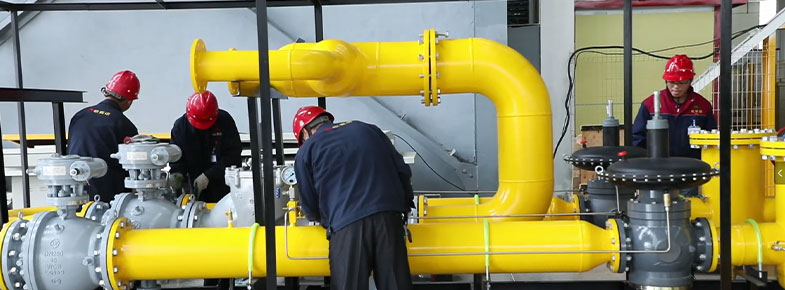
Nov . 09, 2024 08:42
Back to list
Pressure Reduction Station Overview and Functionality Analysis
Pressure Reduction Stations A Vital Component in Gas Distribution
In the world of energy distribution, pressure reduction stations (PRS) play a crucial role in ensuring the safe and efficient delivery of natural gas to consumers. These facilities are designed to modify the high-pressure gas supplied from the main transmission pipelines to a lower, manageable pressure suitable for local distribution networks. This process is essential for several reasons, including safety, equipment protection, and maintaining the integrity of the gas delivery system.
Understanding Pressure Reduction Stations
At its core, a pressure reduction station is a facility that decreases the pressure of gas as it moves from high-pressure transmission lines to the lower-pressure distribution systems that serve homes and businesses. Typically, natural gas is transported across vast distances in high-pressure pipelines to minimize the risk of leakage and energy loss during transit. However, once it reaches urban areas, the gas must be brought down to usable pressure levels, usually between 3 to 60 pounds per square inch (psi), depending on the local distribution system's requirements.
Components of a Pressure Reduction Station
A typical PRS comprises several essential components
1. Incoming and Outgoing Pipelines These transport the gas to and from the station. The incoming pipeline carries high-pressure gas from the transmission system, while the outgoing pipeline delivers the reduced pressure gas to local distributors.
.
3. Safety Devices Since working with high-pressure gas involves significant risks, PRS are equipped with various safety devices, including pressure relief valves, shut-off valves, and alarms. These systems ensure that if there is a malfunction or abnormal pressure spike, the gas can be safely redirected or shut off to prevent accidents.
محطة تخفيض الضغط

4. Measurement Equipment Accurate measurement of gas flow and pressure is vital in PRS operations. Devices such as flow meters and pressure gauges provide real-time data to operators, allowing them to monitor and adjust the system as necessary to maintain safety and efficiency.
Importance of Pressure Reduction Stations
The operation of pressure reduction stations holds immense significance for several reasons
- Safety One of the most critical roles of a PRS is to enhance safety. By regulating gas pressure, these stations prevent potential hazards associated with over-pressurization, such as pipeline ruptures or explosions.
- Reliability PRS help ensure a reliable gas supply to consumers. They manage fluctuations in demand and pressure, especially during peak usage times, thus maintaining a steady flow of gas to residential and commercial users.
- Efficiency Efficient operation of PRS optimizes the energy supply chain. By managing gas pressure effectively, utilities can minimize energy losses and reduce operating costs, which can benefit consumers in the form of lower utility bills.
- Environmental Protection By ensuring that gas is delivered at the proper pressure, PRS also contribute to environmental protection. Controlled distribution systems lead to fewer leaks and, consequently, reduced greenhouse gas emissions.
Conclusion
In summary, pressure reduction stations are a foundational component of our natural gas distribution infrastructure. Their ability to safely and effectively lower gas pressure ensures that energy reaches consumers without incident while maintaining the system's integrity. As we continue to seek more sustainable and efficient energy solutions, the role of PRS will remain vital in balancing safety, reliability, and environmental stewardship in the gas supply chain. Recognizing and investing in these critical facilities can contribute significantly to a sustainable energy future.
Latest news
-
Safety Valve Spring-Loaded Design Overpressure ProtectionNewsJul.25,2025
-
Precision Voltage Regulator AC5 Accuracy Grade PerformanceNewsJul.25,2025
-
Natural Gas Pressure Regulating Skid Industrial Pipeline ApplicationsNewsJul.25,2025
-
Natural Gas Filter Stainless Steel Mesh Element DesignNewsJul.25,2025
-
Gas Pressure Regulator Valve Direct-Acting Spring-Loaded DesignNewsJul.25,2025
-
Decompression Equipment Multi-Stage Heat Exchange System DesignNewsJul.25,2025

